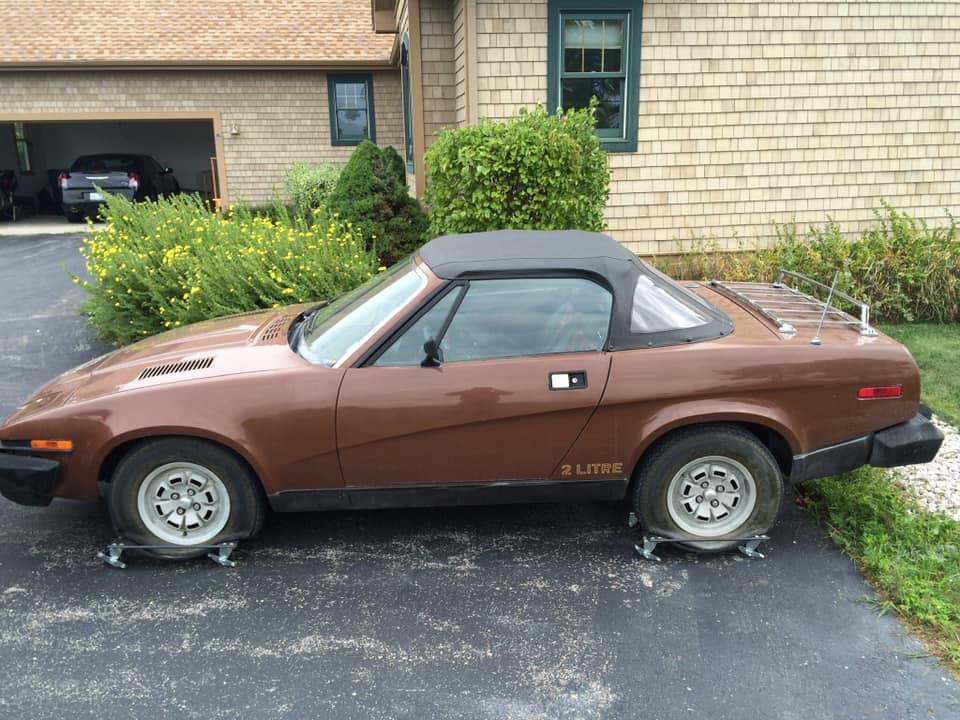And the LeBaron takes a comfy win. I am in total agreement, and in fact, if I were ready to shop for a car, I’d probably go give that thing a test-drive. And by the way, you can in fact drive a convertible year-round here in Portland. I did it for many years. Rain on a soft top is a very soothing, romantic sound. The Autopian’s Slack channel is exactly how you would imagine it: a marketplace of ideas. And by that I mean someone posts a link to a Facebook Marketplace ad, and everyone else encourages their bad ideas. I don’t often get in on the conversations; sadly I’m usually at my day job doing real work while they’re all just sitting around shooting the shit. (I kid, I kid…) But I do sometimes lurk when I get home, to catch up on all the insanity I missed. And it’s a good thing I do, because today’s choices both come from those discussions.
1999 Buick Riviera – $1,495
Engine/drivetrain: Supercharged 3.8 liter OHV V6, 4 speed automatic, FWD Location: Houston, TX Odometer reading: 199,000 miles Runs/drives? Ad says so I can’t remember who was talking about the eighth-generation Riviera, actually, but when I found this one for sale I knew I had to feature it. I remember liking the styling of these when they first came out, espeically after the snooze-fest that was the prior generation. Although it sold well initially, this final-year Riviera was one of fewer than 2,000 built. The Riviera legacy of stylish sporty personal luxury coupes ended not with a bang, but a whimper.
Which is a shame, because this Riv had the goods. It’s powered by GM’s supercharged 3800 Series II engine, putting out a healthy (for the time) 240 horsepower. The only transmission option was a four-speed automatic, of course; this is GM we’re talking about. But would you really want this car with a stickshift?
We don’t get a whole lot to go on about this particular Riviera: “Runs and drives good cold air” is literally the extent of the body text in the ad. It looks OK but not great outside, and in dire need of an upholsterer inside. I guess you’d have to look at it in person to find out more.
I’d like to know why the hood is ajar as well, and I’m mildly annoyed that since it was already popped, that we don’t get an underhood photo. Ah well, for the price, I guess you can’t ask too much.
1980 Triumph TR7 convertible – $1,000
Engine/drivetrain: 2.0 liter SOHC inline 4, 5 speed manual, RWD Location: Pontiac, MI Odometer reading: 80,000 miles Runs/drives? Nope First off: As of this writing, this car is sold, and I sincerely hope that I’m wrong about to whom. Not that it’s a terrible idea, it’s just that it’s a terrible idea. If the link disappears, I apologize.
As an MG owner and enthusiast, I am honor-bound to hate the TR7. During its development, an MG version was planned as well, called the Magna (and in fact the first prototype was MG-badged), but British Leyland didn’t want its own cars competing against each other, so the MG Magna was scrapped, and only Triumph got the new model. MG was left squeezing a few more years out of the aging MGB. To add insult to injury, since the TR7 was initially offered only as a fixed-head coupe, my beloved MGB GT was dropped from the American lineup when the TR7 launched in 1975 to avoid competiton.
The convertible version of the TR7 didn’t arrive until 1979. Personally, I think the covnertible looks better than the hardtop, and I really like it in brown. Not many sports cars can pull off brown, but I think this one looks pretty sharp. I’m not sure how well it goes with the red tartan interior fabric, but what can you do?
The TR7 is powered by a 2 liter version of Triumph’s slant-four engine, also used (and extensively developed) by Saab over the years. Early TR7s had four-speed manuals with short gearing that made highway cruising a raucous affair, but this later one has a five-speed with an overdrive in fifth, which calms things down. Assuming the buyer can get it running again, that is; TR7s are finicky. I can’t tell you how much fun it is working with such an eclectic group of car nuts. I never know what vehicle someone is going to unearth, or where the discussion will go after that. And I hope they don’t mind me mining those discussions for content once in a while. For today, the gems I’ve unearthed are a scruffy personal luxury coupe and a British roadster in its natural non-running state. What’ll it be?
(Image credits: Craigslist and Facebook Marketplace sellers) By comparison, the Buick’s interior looks completely beat to shit. And something is going on with the front end. The passenger side front fender is missing trim and the gap on the hood is bigger on the passenger side than on the driver side. Something is definitely off with it. The fitment of the driver’s door also looks a little off. So that’s why I picked the TR7. What the TR7 needs seems a lot more straightforward than the issues the Buick probably has. I’ve seen that conversion a few times over the years and even drove one I’d considered buying, but it’s been so long that for the life of me I can’t remember if it takes just the I/O plumbing or a full swap.









